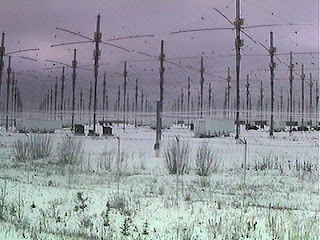As a researcher of the unexplained, I understand how important our work is. For naysayer's who do not recognize Cryptozoology as an actual science, researchers tend to use successful discoveries to prove the validity of their work. There have been a handful of discoveries scattered throughout the past centuries that lend credence to cryptozoological research and as history has shown, there are more to follow. Here is one of the stories of a monumental finding that has reshaped the zoological mainstream, as we know it today.
One of the most unique and mysterious creatures in the
animal kingdom has a modern day history steeped in science and popular
imagination, the fabulous Coelacanth ("see-la-kanth"), that 400
million year old "living fossil" fish, survives. Pre-dating the
dinosaurs by millions of years and once thought to have gone extinct with them,
the Coelacanth was "discovered" alive and well in 1938 although not
reported on publicly until 1939.
In December 1938, Captain Hendrick Goosen, of the trawler
Nerine, contacted Marjorie Courtenay Latimer curator of a tiny museum in the
port town of East London, northeast of Cape Town, South
Africa. Captain Goosen provided her with all
of the unusual specimens to research at her museum. What they didn't know was
that their catch that day would eventually change history. While searching
through the catch of the day, she noticed a strange fish, roughly five feet
long, pale mauve blue with iridescent silver markings. Having no idea of what
type of fish it was Marjorie rushed back to the museum to do some research.
Raking through the few reference books on hand, she found a
picture that led her to a seemingly impossible conclusion. Her specimen bore
similarities to a prehistoric fish, particularly in the structure of the head
and the tri-lobed shape of the tail. She made a rather crude sketch of the
creature, which she mailed, along with a description, to Professor J.L.B.
Smith, chemistry teacher at Rhodes
University, Grahamstown.
After first being dismissed as a common rock cod, many
members of the museum staff were overwhelmed when they received the historic
telegram on January 3, 1939. Professor Smith writes in a now famous cable:
"MOST IMPORTANT PRESERVE SKELETON
AND GILLS = FISH DESCRIBED." However, in an attempt to preserve the
fish by mounting it, the innards had been discarded.
A search for them in the museum and town trash bins proved
fruitless. Even photographs taken of the preparation had somehow been spoiled.
Smith did not arrive did not arrive at the East London
museum until February 16, where he could finally view this discovery. He
identified the fish immediately as a coelacanth or a member of what must be a
living coelacanth species. This fish would soon be called the "most important
zoological find of the century." A living dinosaur, it was said, would be
no more amazing than this incredible discovery.
After a local newspaper reporter was allowed to take a
single photograph of the mounted coelacanth, the picture soon appeared around
the world. Smith, Courtenay-Latimer, and the coelacanth became overnight
celebrities. When a public viewing for one day only was arranged, 20,000
visitors are said to have shown up. Unfortunately, there was a lot of work left
to be done. With no internal organs left from the East
London specimen, many questions remained unanswered. Smith was
soon obsessed with finding a second intact specimen. Speculating that the fish
had drifted down from the north on the Mozambique
current, he had a reward notice with a picture of the first specimen posted
among the East African coast up as far as Kenya. A decade went by with no response. Smith continued a
long-term project of cataloging the fishes of the Indian
Ocean. It was during this period that the myth of the coelacanth
as a deep ocean fish took hold in the popular and scientific imagination.

Expeditions from Europe
scoured the ocean depths in search of coelacanths. But Smith remained convinced
that the fish's physiognomy and blue color made it a lower reef predator and
not a true deep-water fish. The search continued for a second live specimen
until December 1952 when Captain Eric Hunt, who helmed the vessel, the Nduwaro
landed in the port of Mutsamudu on the Comorian island of Anjouan.
Two Comorans carrying a hefty bundle approached him. One,
Ahamadi Abdallah, had caught by hand-line what the locals called a
"mame" or "Gombessa", a heavy grouper-like fish that turned
up on their lines from time to time. This was the break Smith had been searching
for, after 14-years of searching, a second specimen had indeed been found.Smith
now had his second specimen, organs intact, and the familiarity of the natives
with this creature meant that at least one location of the coelacanth's habitat
had been discovered.
Therefore, if you are ever in the Comoro islands, which lie
midway between Tanzania and Madagascar
remember that Coelacanths spend the day resting in underwater caves between 300
and 700 Feet deep. They hover without touching each other or the cave walls and
they come out to feed only at night.











.jpg)







































